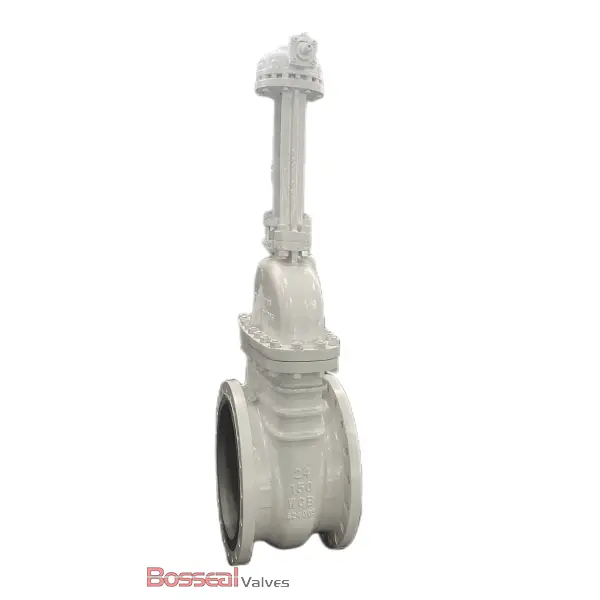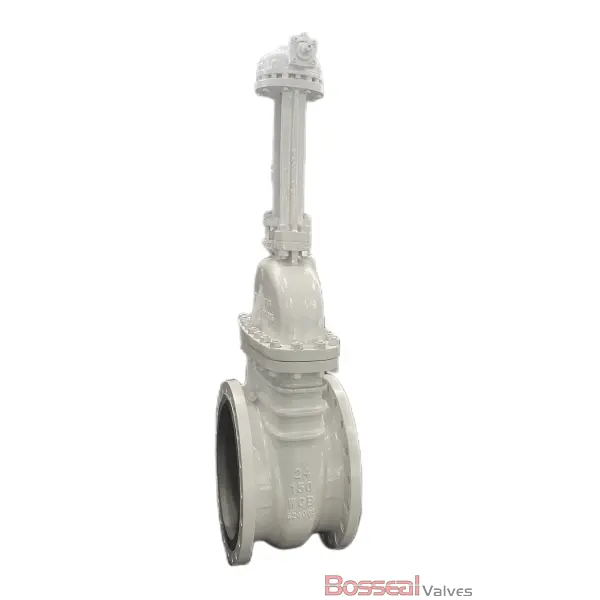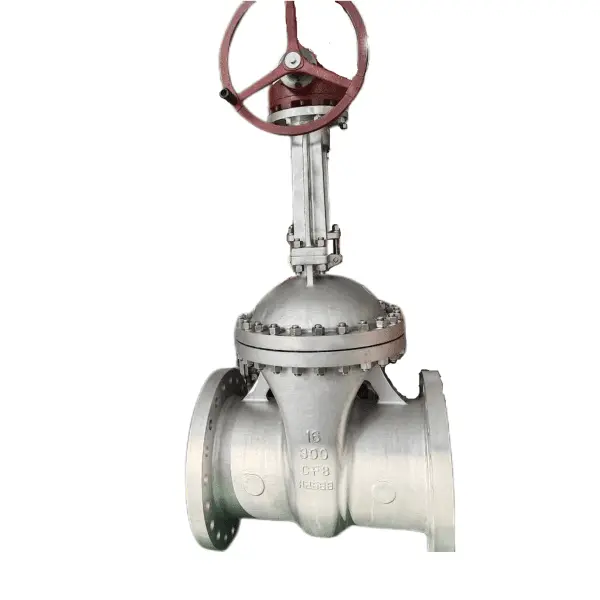API 600
Gate Valve, Stainless Steel ASTM A351 CF8, 16 Inch/DN400, 150 LB, RF Flanged.
1821052 Gate Valve
Design Standard: API 600
Structure: Bolted Bonnet/Pressure Seal Bonnet
Body Material: ASTM A351 CF8, ASTM B148 C95800, ASTM A352 LCB, ASTM A216 WCB, ASTM A351 CF8M, ASTM A890 4A, ASTM A890 5A.
Nominal Size: 16 Inch, DN400
Nominal Class: 150 LB, PN16
Bore Type: Standard Bore(API 600)
Operation: Handwheel/Gear
Trim Material: ASTM A182 F6A, ASTM A182 F304, ASTM A182 F316, F51, F53, F55
Face to Face: ASME B16.10
Test and Inspection: API 598
End Connection: RF Flanged
1. OS&Y (Outside Screw and Yoke) design for reliable operation.
2. Screwed-in back seat enhances security.
3. Rising stem with non-rising handwheel for ease of use.
4. Flexible wedge provides superior sealing performance.
5. Low emission design ensures environmental compliance.
| Body Material: |
Carbon Steel, Stainless Steel, Alloy Steel, Aluminum Bronze |
| Normal Diameter: |
2 Inch - 64 Inch (DN50 - DN1600) |
| Pressure Range: |
Class 150 LB - 2500 LB |
| End Connections: |
RF (Raised Face), RTJ (Ring-Type Joint), BW (Butt Weld) |
| Working Temperature: |
-29°C - +400°C |
| Operation: |
Handwheel/Gear/Motor |
The gate valve is a multi-turn valve designed for use as an isolation valve in pipelines, providing full open and close functionality. It operates by a threaded stem that drives the gate against two seats, effectively blocking the flow of fluid. The seats are typically made of metal with hard facing, such as Stellite (CoCrW) or stainless steel overlay, to ensure long-lasting performance. For specific applications, such as water service, soft seats can also be used.
Compared to other shut-off valves, gate valves require less installation space. Their multi-turn design allows for slower operation, which helps to prevent water hammer effects. Gate valves are ideal when low pressure drop and an unobstructed bore are required.
These valves are versatile and widely used in various applications, making them suitable for handling different fluids, including water, oil, steam, gas, and slurry.






